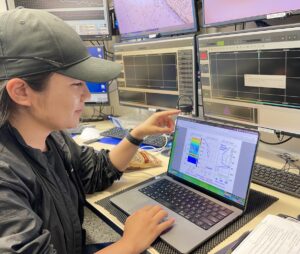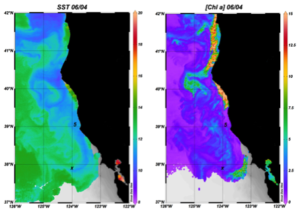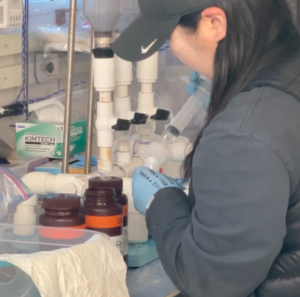Wednesday, June 07, 2023 – North Pacific Ocean (Latitude: 38.05.663 N, Longitude: 124.00.117 W)
Using Physics to Find Life

Challenging weather and ocean conditions resulted in the decision to leave our upwelling plume off the coast of Oregon and head southward near Point Arena, California. Yubeen Jeong (UNC-CH Graduate Student – Physical Oceanographer) is tracking the drifter that was launched from the R/V Sally Ride earlier in the research cruise. (See Day 3, May 30.)

As the drifter “pinged” its location, Yubeen compared the drifter’s track with data from the ship’s Acoustic Doppler Current Profiler (ADCP) to assist the scientists in finding and tracking the upwelling cycle along the coast. The ADCP provides current velocity and direction down to 80m (262 feet).
Additional onboard sensors provide sea surface temperature and fluorescence, which is an indicator of chlorophyll. Cooler temperatures at the surface with high chlorophyll readings are

good indicators of an upwelling current as it pushes cold, nutrient-rich water toward the surface. Higher chlorophyll readings result from the presence of phytoplankton as they take in the nutrients and begin to emit fluorescence. (See Figure 39.) Since losing the drifter buoy (See Figure 38), Yubeen continues to analyze the ship’s ADCP data in addition to the sea surface temperature and chlorophyll data to assist the researchers in locating and following more upwelling plumes.

